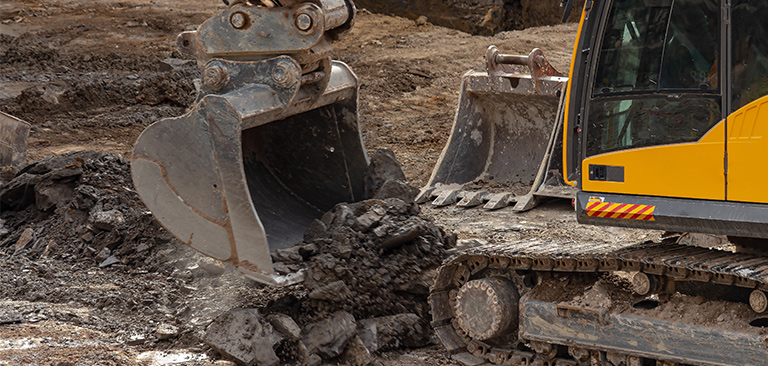- All
- Product Name
- Product Keyword
- Product Model
- Product Summary
- Product Description
- Multi Field Search

The bucket is a type of earthwork construction machinery that is commonly used in highway, railroad, construction, hydropower, port, mining, and other construction projects. They are primarily used for shoveling soil, gravel, lime, coal, and other bulk materials, but they can also be used for ore, hard soil, and other light shoveling operations. With various auxiliary operating devices, it may also be used for bulldozing, lifting, and loading and unloading of other commodities such as lumber.
The bucket is extensively used in road building, particularly in high-grade highway construction, for filling and excavating road base works, aggregation, and loading of asphalt mix and cement concrete yard. It can also push and transfer soil, scrape the ground, and pull other machines and do other tasks. Because of its benefits in terms of quick operating speed, high efficiency, good mobility, and light operation, the loader has become one of the most common types of equipment used in engineering construction.
Bucket cutting edge is often an accossary of the bucket excavator. Each form of bucket cutting edge has a distinct function. Here are 4 commonly used bucket cutting edge types.
1. BOLT-ON
The most popular and least priced bucket edge option. Bolt-on edges protect and strengthen the bucket's front end. They keep the bucket's lead edge (lip) from wearing down.
The bolt-on edge is replaceable, reversible, and both sides are beveled. It is possible to reverse it before it wears back into the bucket. When both sides have worn entirely, it may be readily replaced in minutes.
2. TOOTHBAR
Adding a toothbar to a skid steer bucket significantly improves digging ability. It will aid in cutting through rocky soil, scooping loose dirt, and digging out roots.
The toothbar is easily removable and replaceable. The bucket will be more adaptable now that the toothbar is detachable. The adaptability of the toothbar comes at a cost. This edge option is more costly than weld-on teeth.
The adaptability of the toothbar is well worth it for operators who will use it. When removing snow or dragging your back, you generally don't want a toothbar (or any teeth on the bucket). The flexibility to remove the toothbar leaves your options open and allows you to go either route. However, if you are certain that you will never need to remove the toothbar, weld-on teeth may be the better option.
3. WELD-ON TEETH
Weld-on teeth, like toothbars, excel in breaking up compacted soil, catching pebbles, and removing roots, but they are permanent. The teeth are stronger than a toothbar since they are welded directly to the bucket. The increased strength allows the attachment to operate better in difficult soil conditions (like clay).
Non-removable (weld-on) teeth may present complications while back dragging, grading, or plowing snow. Weld-on teeth, on the other hand, cannot be combined with a regular bolt-on edge, but a toothbar may.
Weld-on teeth should not be chosen just because they are less costly than a toothbar. The lack of adaptability may wind up costing you in the long run. Instead, think about how you'll utilize the attachment before making a decision.
4. SERRATED EDGE
The serrated edge is another option to explore. Serrated edges are used to loosen difficult-to-penetrate materials like packed gravel. These bucket edges are fantastic for breaking through frozen ground. This edge, like a toothbar, is easily removed or replaced since it is fastened to the bottom lip of a bucket.
You will never have to worry about breaking a tooth or shank with a serrated edge. They are as strong as a regular bolt-on edge since the force is applied throughout the full edge when it contacts the ground. Furthermore, the serrated edge prevents the bucket lip from wearing out, reducing maintenance costs and time spent in the shop.
If you primarily need to smooth down or scrape roads, the serrated edge is an excellent choice for cutting through stubborn compact gravel or ice. If required, you may always remove it afterwards.
Each bucket edge choice has its own own set of attributes. Understand what they are in order to determine which form of edge will work best for your company.
Yassian designs and manufactures all styles of aftermarket bucket cutting edges. We do wholesale business for clients all over the world. And OEM/ODM service is also available in our factory. Please contact us if you have any inquiry on bucket cutting edges.